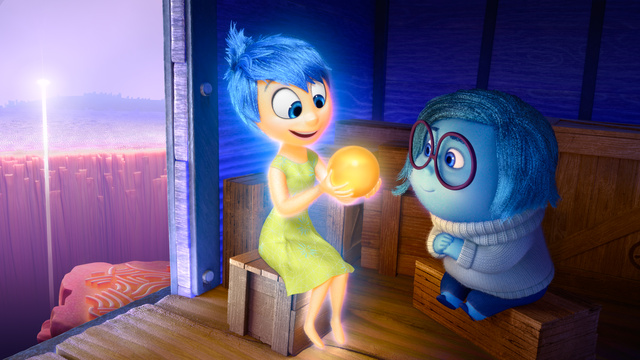Review: Inside Out
Screened at the Edinburgh International Film Festival Directed by Pete Docter Starring Amy Poehler, Phyllis Smith, Richard Kind, Bill Hader, Lewis Black Inside the head of an 11-year-old girl, her […]
Screened at the Edinburgh International Film Festival Directed by Pete Docter Starring Amy Poehler, Phyllis Smith, Richard Kind, Bill Hader, Lewis Black Inside the head of an 11-year-old girl, her […]

Screened at the Edinburgh International Film Festival
Directed by Pete Docter
Starring Amy Poehler, Phyllis Smith, Richard Kind, Bill Hader, Lewis Black
Inside the head of an 11-year-old girl, her personified emotions struggle to cope with big changes in her life…
Inside Out, Pixar’s latest animated ‘triumph’, has been receiving rave reviews following its American release. Not for the first time, I’m going against the grain in this review: Inside Out is little more than a run-of-the-mill Numskulls knockoff with some disturbing implications for what emotions are acceptable and which are not.
The Numskulls was a British cartoon strip that ran in The Beezer, The Beano and The Dandy in various iterations since 1962. Rather than emotions as in Inside Out, the little figures depicted as being inside the head of a young boy were more concerned with mechanical control of arms and legs, the senses, and the brain. On that fact alone, Variety’s claim that Inside Out is Pixar’s ‘stunningly original concept’ is simply incorrect. Even in an American context, there was Disney’s own similar Epcot attraction Cranium Command from 1989 and the 1990s TV series Herman’s Head.
Admittedly, there is more to Inside Out than just the Numskulls element and the focus on emotions. The concepts surrounding memory creation and how the emotions and memories work together is interesting, but the ‘adventure’ element of the film, in which Joy and Sadness get lost in the interior of the mind, is simply a re-tread of Pixar’s own Finding Nemo. It might say something about me that my favourite character in Inside Out is Lewis Black’s Anger, the red-faced, squat caricature, but we’ll gloss over that…
There’s also a disturbing emotional fascism about Inside Out. Joy is depicted as the natural default state of human beings, and while the film concludes that all the emotions are needed and must work together for balance, inconvenient emotions like Sadness are depicted as unwanted and positively perverse. This is a very ‘happy clappy’ American view of things, and it’ll be interesting to see if Inside Out plays as well outside the US, especially with adult audiences, than it has done so far. The film’s final moments and end credits bonus scenes are easily the best bits.
Verdict: Far from original and far from fantastic, Inside Out is no more than a kid’s time waster that’s been wildly over-rated, 5/10
Brian J. Robb
For further details visit Edinburgh International Film Festival
Released nationwide in the UK from 24 July